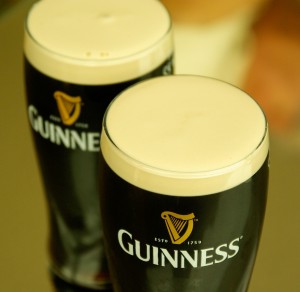Hoy es un día ideal para acercarse a un bar irlandés a tomarse una rica cerveza por San Patricio pero antes de hacerlo deberíamos leer un poco a cerca de su historia:
ABOUT SAINT PATRICK
«Saint Patrick is the patron saint and national apostle of Ireland. St Patrick is credited with bringing christianity to Ireland.
According to different versions of his life story it is said that he was born in Britain, around 385AD. His parents Calpurnius and Conchessa were Roman citizens living in either Scotland or Wales. As a boy of 14 he was captured and taken to Ireland where he spent six years in slavery herding sheep. He returned to Ireland in his 30s as a missionary among the Celtic pagans.
Saint Patrick described himself as a “most humble-minded man, pouring forth a continuous paean of thanks to his Maker for having chosen him as the instrument whereby multitudes who had worshipped idols and unclean things had become the people of God.”
Many folk ask the question ‘Why is the Shamrock the National Flower of Ireland ?’ The reason is that St. Patrick used it to explain the Holy Trinity to the pagans.
In the custom known as “drowning the shamrock”, the shamrock that has been worn on a lapel or hat is put in the last drink of the evening.
Saint Patrick is most known for driving the snakes from Ireland. It is true there are no snakes in Ireland, but there probably never have been – the island was separated from the rest of the continent at the end of the Ice Age. As in many old pagan religions, serpent symbols were common and often worshipped. Driving the snakes from Ireland was probably symbolic of putting an end to that pagan practice. While not the first to bring christianity to Ireland, it is Patrick who is said to have encountered the Druids at Tara and abolished their pagan rites. The story holds that he converted the warrior chiefs and princes, baptizing them and thousands of their subjects in the “Holy Wells” that still bear this name.
There are several accounts of Saint Patrick’s death. One says that Patrick died at Saul, Downpatrick, Ireland, on March 17, 460 A.D. His jawbone was preserved in a silver shrine and was often requested in times of childbirth, epileptic fits, and as a preservative against the “evil eye.” Another account says that St. Patrick ended his days at Glastonbury, England and was buried there. The Chapel of St. Patrick still exists as part of Glastonbury Abbey. Today, many Catholic places of worship all around the world are named after St. Patrick, including cathedrals in New York and Dublin city.»
A toast for St Patrick’s Day, “May the roof above us never fall in, and may we friends beneath it never fall out.”
Y ahora sí, salgamos a celebrar!


